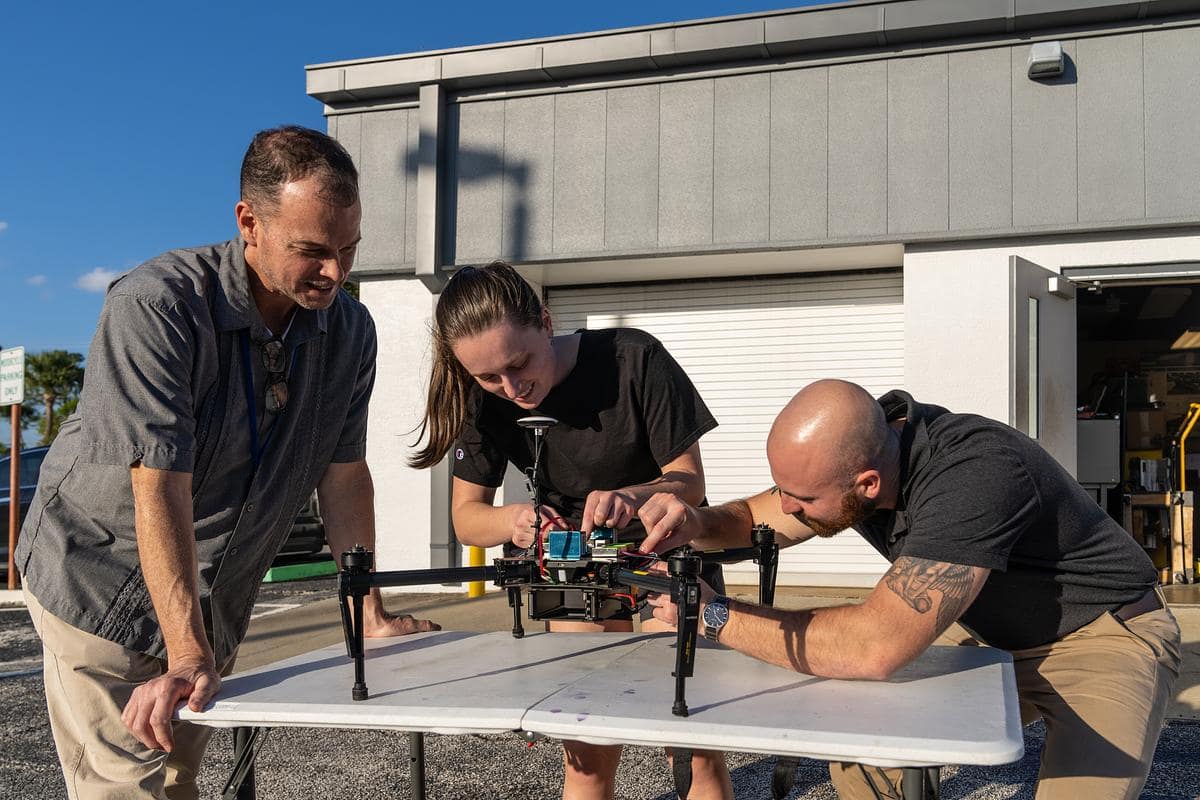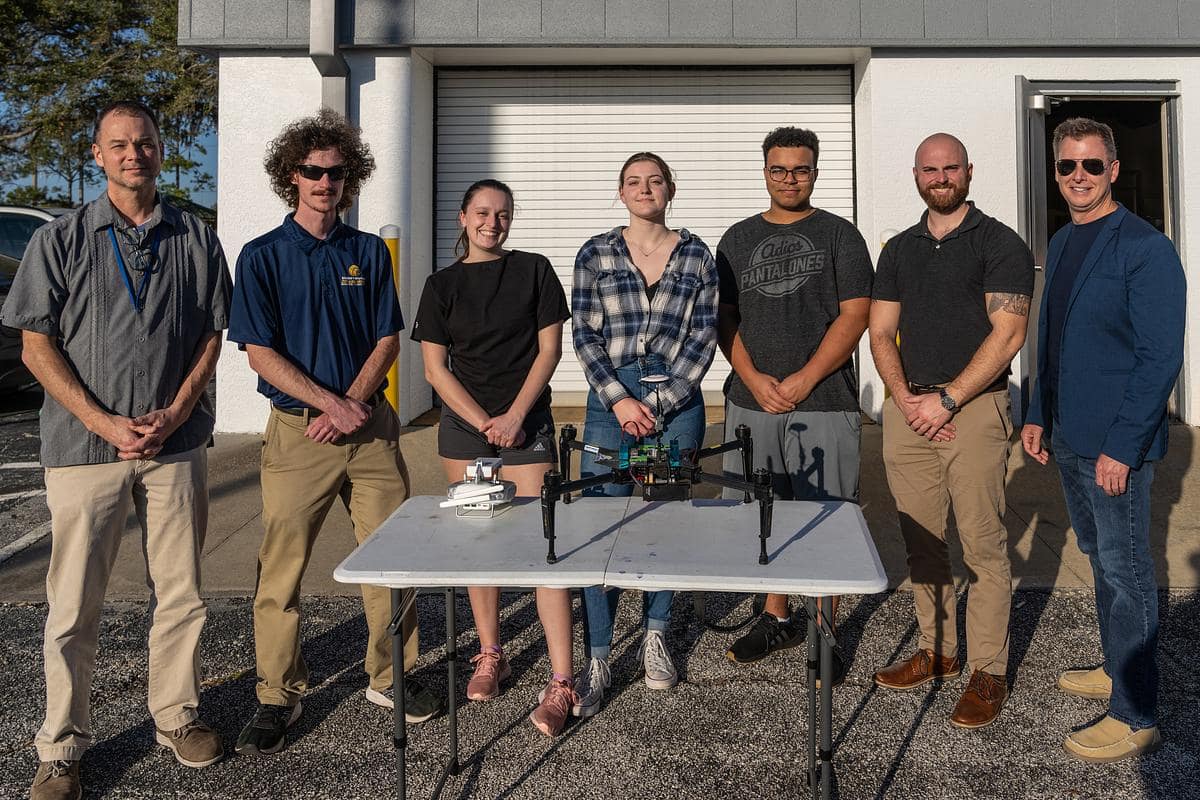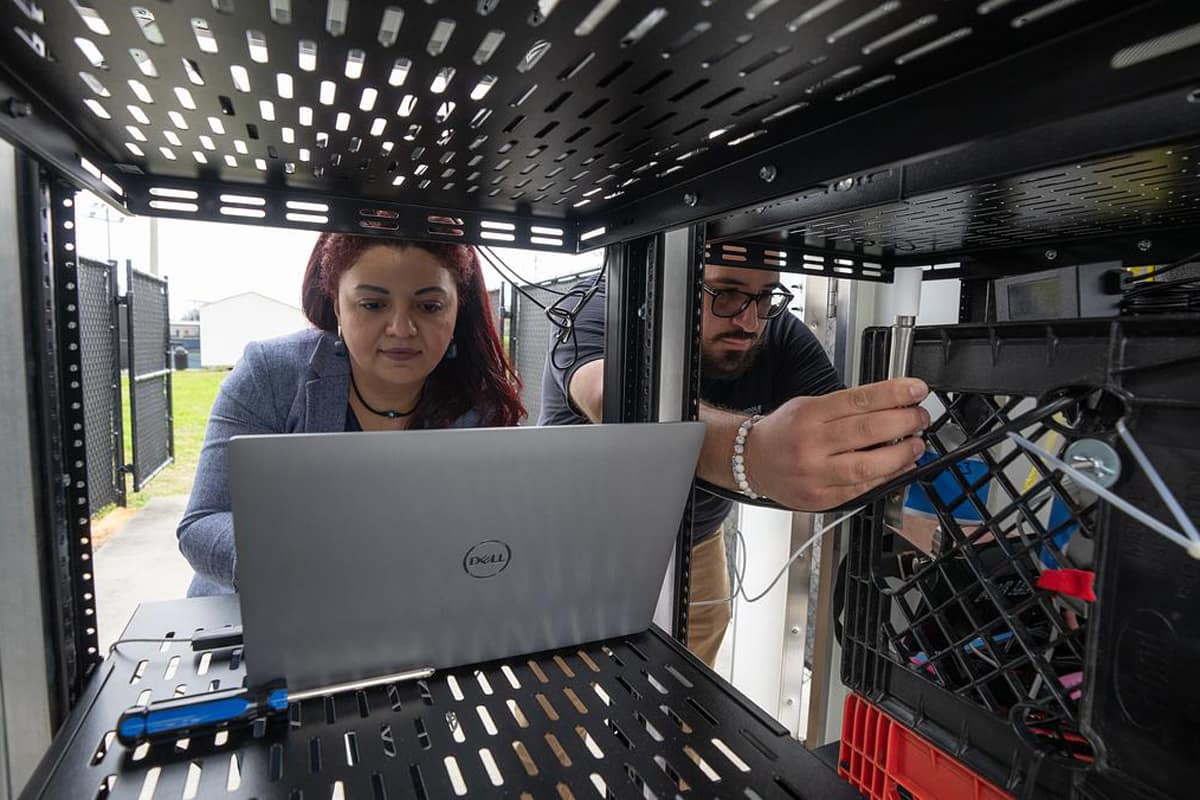EPA to Get First Look at Eagle Research That Monitors Air Quality Using Drones



How can uncrewed aircraft systems, or drones, help improve air quality?
That is the subject of ongoing research at Embry-Riddle Aeronautical University, which recently was awarded a $25,000 grant from the Environmental Protection Agency’s (EPA) People, Prosperity and the Planet (P3) Program. The research group was also one of only 16 teams chosen nationally to travel to Washington, D.C., in May to present its work to the EPA.
“We’ve competed and won five different EPA P3 awards over the last 10 years, so we have a very good track record with this competition,” said Dr. Marc Compere, who is a project co-investigator, an associate professor of Mechanical Engineering and director of the Energy Systems Lab. “Our research using smaller and lighter low-cost sensors on uncrewed aircraft is a unique proposal.”
The project merges Embry-Riddle’s expertise in aviation and engineering to investigate a low-cost solution to better monitor air quality and atmospheric pollution, according to Dr. Marwa El-Sayed, the project’s principal investigator, an assistant professor of Civil Engineering and the director of Embry-Riddle’s Sustainability and Environmental Engineering Lab (SEEL).
The goal of the project is the implementation of the three pillars of sustainability to characterize air quality using various low-cost sensors in three different modes, she said. Currently, the monitors are expensive, require high maintenance and are suitable only for ground-based measurements.
“This study has the potential to produce viable systems to be used by the public, and systems to be implemented in manned and unmanned vehicles,” said El-Sayed.
Students and faculty from the departments of Civil Engineering, Mechanical Engineering and Aeronautical Science are working together on the research. A student organization, called MOVE UAS, is also involved. They are focused on integration, testing and implementation of the sensors — which are commercially available — onto the drones.
Leah Smith, president of MOVE UAS and a Mechanical Engineering student, is working alongside fellow students Erik Libergall and Kaleb Nails to integrate and collect sensor data for ground sampling and aerial stations.
“Appreciably spaced surface observations of air quality can now be easily supplemented by uncrewed aircraft systems that provide high-resolution three-dimensional observations,” added Dr. Kevin Adkins, another co-investigator, associate professor of Aeronautical Science and director of the Unmanned Vehicle and Atmospheric Investigation Lab.
Andres Munevar, who is the team’s student lead in Civil Engineering, said the project builds on the work of past students who conducted air quality testing, which included attaching sensors to a weather balloon.
“We want this to become long-term research,” said Munevar, who works in El-Sayed’s lab and recently won first place at Embry-Riddle’s Student Research Symposium. “We look at this as a small portion of what’s to come.”

 Melanie Stawicki Azam
Melanie Stawicki Azam